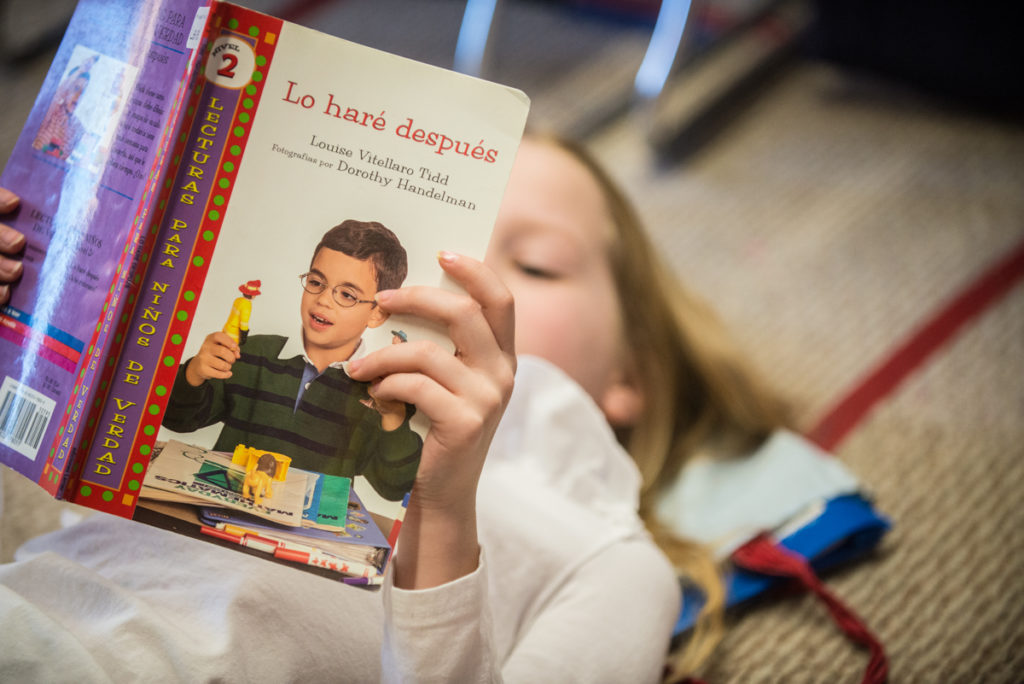
Welcome to Room 327! Here, on a warm day in May, you’ll find thirty third graders reading independently. The room is silent, save for the occasional chuckle or sound of disbelief you might expect from children fully immersed in their reading. Meanwhile, I’m conferencing with individual students, running guided reading groups, or holding book club meetings. This scene continues for over fifty minutes until I ring the chime, signaling the end of independent reading.
“What?” “No way!” “That felt like 10 minutes!” From the looks and sounds of the students’ reactions, they want to and could stay reading.
Was this what you would have seen if you’d visited at the beginning of school? Absolutely not. Earlier in the year, this group of third graders couldn’t sustain their focus for more than a few minutes at a time, with reading or any other independent work. They’d get up and wander the room, fidget with their pencil cases, or let their eyes wander off the page. Lacking the skills to stick with the task at hand, they were easily distracted and quickly tired.
It’s important to deliberately stretch students’ ability to focus—because without that ability, they’ll find it harder and harder to feel the joy in learning, and harder and harder to do the rigorous work being asked of them in this age of the Common Core State Standards. So how can teachers help students build stamina for sustained focus? Over my ten years of teaching, I’ve found that the following strategies work well.
I make sure students know what staying focused looks, sounds, and feels like. Using Interactive Modeling, I teach and have students practice how to keep quiet, talking only when truly necessary. I model exactly what their eyes, mouths, hands, and feet should be doing when they’re focused on a quiet independent task. I also teach “personal management”—for instance, how to take bathroom and water breaks if needed.
I frequently use the analogy of marathon training when helping students build endurance for focusing. “Marathon runners can’t run 26.2 miles on day one. They build endurance day by day. Maybe they run three miles at first, then four, and so on. Eventually they build to twenty or more miles. This is similar to the way we’ll build our reading stamina. First we’ll begin with three minutes, then five minutes, and then ten. Our goal is to read on our own for twenty minutes by the end of the month.”
One important way to help students build stamina is to give them strategies for getting back on track when they lose focus. For example, I model breathing techniques (such as inhaling and exhaling slowly three times) and then students practice them. The goal is for students to have ways to take small breaks without disrupting their concentration or others’.
Students are motivated by seeing their progress. My class uses a simple graph to show their progress in reading without distraction or teacher reminders from week to week (and eventually month to month).
For various reasons, some students will be able to build endurance more quickly than others. Increasing stamina is our common goal, but I differentiate how I help individual students get there. For instance, an accommodation I’d make for a student who isn’t yet able to sustain independent reading for as long as the rest of the class might involve reading for less time and then working silently on a related activity such as a word search.
Students need time to reflect on what’s working well and what’s challenging about sustaining focus. Sometimes I have them reflect on their level of concentration by writing in their notebooks or sharing during closing circle. I encourage students to name what gets in the way of focusing (such as sitting near a friend, having worried thoughts, or being hungry) and to address those issues if they can. I’ve found that hearing their peers identify difficulties motivates the class to work together to overcome those challenges.
Planning interesting and appropriately challenging lessons is certainly important when it comes to academic engagement. But we must also teach students to build stamina for sustained focus so they can become immersed—and successful—in their learning.
Kate Umstatter is a Responsive Classroom teacher.